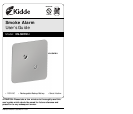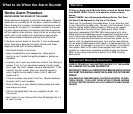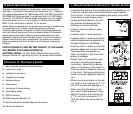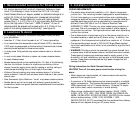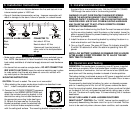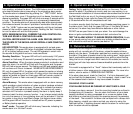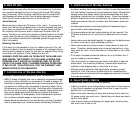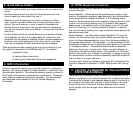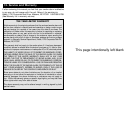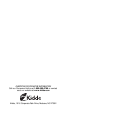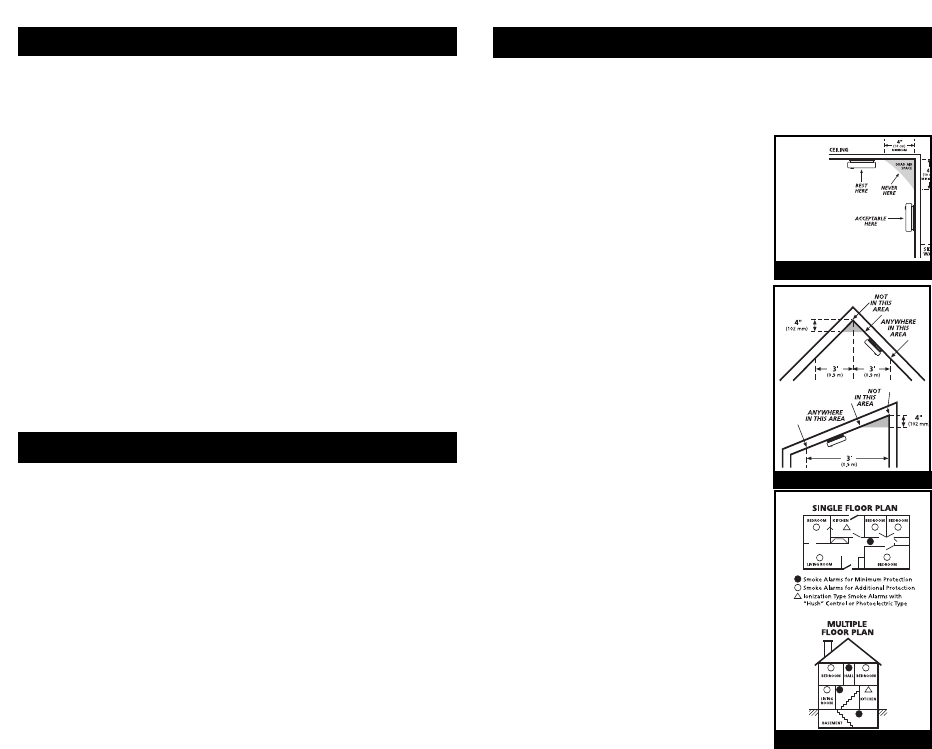
• Locate the first alarm in the immediate area of the bedrooms. Try
to monitor the exit path as the bedrooms are usually farthest
from the exit. If more than one sleeping area exists, locate addi-
tional alarms in each sleeping area.
• Locate additional alarms to monitor
any stairway as stairways act like
chimneys for smoke and heat.
• Locate at least one alarm on every
floor level.
• Locate an alarm in every bedroom.
• Locate an alarm in every room where
electrical appliances are operated (i.e.
portable heaters or humidifiers).
• Locate an alarm in every room where
someone sleeps with the door closed.
The closed door may prevent an
alarm not located in that room from
waking the sleeper.
• Smoke, heat, and combustion prod-
ucts rise to the ceiling and spread
horizontally. Mounting the smoke
alarm on the ceiling in the center of
the room places it closest to all points
in the room. Ceiling mounting is pre-
ferred in ordinary residential construc-
tion.
• When mounting an alarm on the ceil-
ing, locate it at a minimum of 4” (10
cm) from the side wall (see figure 1).
• When mounting the alarm on the
wall, use an inside wall with the top
edge of the alarm at a minimum of
4” (10 cm) and a maximum of 12”
(30.5 cm) below the ceiling (see fig-
ure 1).
Contents of This User’s Guide
1. Recommended Locations for Smoke Alarms
2. Locations to avoid
3. Installation Instructions
4. Operation and testing
5. Nuisance Alarms
6. Maintenance
7. Limitations of Smoke Alarms
8. Good Safety Habits
9. NRC Information
10. NFPA Protection Standard 72
11. California State Fire Marshal Required Information
12. Service and Warranty
1. Recommended Locations for Smoke Alarms
This alarm detects products of combustion using the ionization
technique. It contains 0.9 microcurie of Americium 241, a radioac-
tive material (see section 9). Distributed under U.S. NRC License No.
32-23858-01E. Manufactured in compliance with U.S. NRC safety
criteria in 10 CFR 32.27. The purchaser is exempt from any regula-
tory requirements. Do not try to repair the smoke alarm yourself.
Refer to the instructions in section 12 for service.
Smoke alarms are devices that can provide early warning of possible fires
at a reasonable cost; however, alarms have sensing limitations.
Ionization sensing alarms may detect invisible fire particles (associated
with fast flaming fires) sooner than photoelectric alarms. Photoelectric
sensing alarms may detect visible fire particles (associated with slow
smoldering fires) sooner than ionization alarms. Home fires develop in
different ways and are often unpredictable. For maximum protection,
Kidde recommends that both Ionization and Photoelectric alarms be
installed.
LOSS OF POWER (AC AND BATTERY BACKUP) TO THE ALARM
WILL RENDER THIS ALARM INOPERATIVE.
ELECTRICAL RATING: 120 VAC, 60HZ, 30mA maximum per alarm
(maximum 30mA for originating unit with 18 devices interconnected).
Product Specifications
FIGURE 1
FIGURE 3
FIGURE 2



